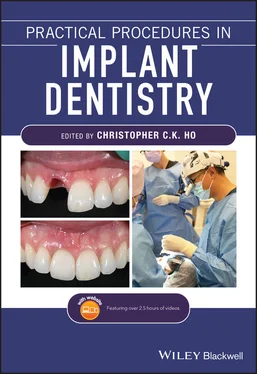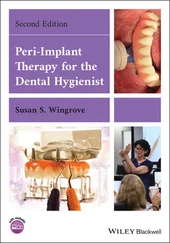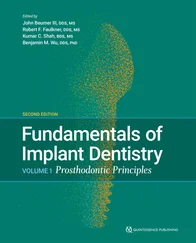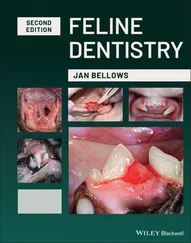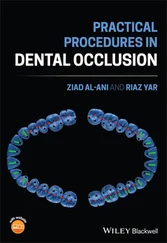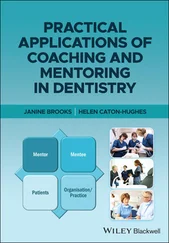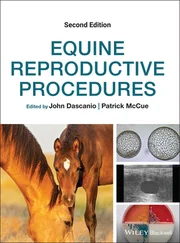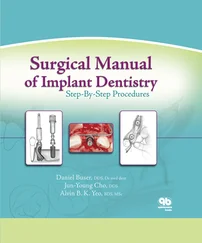1 Cover
2 Title Page
3 Copyright Page
4 Foreword
5 List of Contributors
6 About the Companion Website
7 1 Introduction References
8 2 Patient Assessment and History Taking 2.1 Principles 2.2 Tips References
9 3 Diagnostic Records 3.1 Principles 3.2 Procedures 3.3 Tips References
10 4 Medico‐Legal Considerations and Risk Management 4.1 Principles 4.2 Procedures 4.3 Tips Reference
11 5 Considerations for Implant Placement 5.1 Principles 5.2 Procedures 5.3 Tips References
12 6 Anatomic and Biological Principles for Implant Placement 6.1 Principles 6.2 Procedures 6.3 Tips References
13 7 Maxillary Anatomical Structures 7.1 Principles 7.2 Maxillary Incisive Foramen and Canal 7.3 Nasal Cavity 7.4 Infraorbital Foramen 7.5 Maxillary Sinus 7.6 Greater Palatine Artery and Nerve References
14 8 Mandibular Anatomical Structures 8.1 Principles 8.2 Mental Foramen and Nerve 8.3 Mandibular Incisive Canal and Nerve 8.4 Genial Tubercles 8.5 Lingual Foramen and Accessory Lingual Foramina 8.6 Sublingual Fossa 8.7 Submental and Sublingual Arteries 8.8 Inferior Alveolar Canal and Nerve 8.9 Lingual and Mylohyoid Nerves 8.10 Submandibular Fossa 8.11 Mandibular Ramus References
15 9 Extraction Ridge Management 9.1 Principles 9.2 Osteoconductive Materials for Ridge Management 9.3 Biologically Active Materials for Ridge Management 9.4 Influence of Buccal Wall Thickness on Ridge Management References
16 10 Implant Materials, Designs, and Surfaces 10.1 Principles 10.2 Implant Bulk Materials 10.3 Implant Surface Treatments 10.4 Implant Design 10.5 Summary References
17 11 Timing of Implant Placement 11.1 Principles 11.2 Procedures 11.3 Tips References
18 12 Implant Site Preparation 12.1 Principles 12.2 Assessing Implant Sites and Adjacent Teeth 12.3 Site Preparation References Further Reading
19 13 Loading Protocols in Implantology 13.1 Principles 13.2 Procedures 13.3 Tips References
20 14 Surgical Instrumentation 14.1 Principles 14.2 Optional Instrumentation 14.3 Tips
21 15 Flap Design and Management for Implant Placement 15.1 Principles 15.2 Procedures 15.3 Tips References
22 16 Suturing Techniques 16.1 Principles 16.2 Procedures 16.3 Tips
23 17 Pre‐surgical Tissue Evaluation and Considerations in Aesthetic Implant Dentistry 17.1 Principles 17.2 The Influence of Tissue Volume on Peri‐implant ‘Pink’ Aesthetics 17.3 Tissue Volume Availability and Requirements 17.4 Pre‐operative Implant Site Assessment (Figures 17.6 and 17.7) 17.5 Key Factors in Diagnosis of the Surrounding Tooth Support Prior to Extraction 17.6 Tips 17.7 Conclusion References
24 18 Surgical Protocols for Implant Placement 18.1 Principles 18.2 Procedures 18.3 Tips References
25 19 Optimising the Peri‐implant Emergence Profile 19.1 Principles 19.2 Procedures 19.3 Tips References
26 20 Soft Tissue Augmentation 20.1 Principles 20.2 Procedures 20.3 Tips References Further Reading
27 21 Bone Augmentation Procedures 21.1 Principles 21.2 Procedures 21.3 Tips References
28 22 Impression Taking in Implant Dentistry 22.1 Principles 22.2 Procedures 22.3 Tips References
29 23 Implant Treatment in the Aesthetic Zone 23.1 Principles 23.2 Procedures 23.3 Tips References
30 24 The Use of Provisionalisation in Implantology 24.1 Principles 24.2 Procedures 24.3 Tips Reference
31 25 Abutment Selection 25.1 Principles 25.2 Procedures 25.3 Tips References
32 26 Screw versus Cemented Implant‐Supported Restorations 26.1 Principles 26.2 Procedures 26.3 Tips References
33 27 A Laboratory Perspective on Implant Dentistry 27.1 The Shift from Analogue to Digital 27.2 Standards in Manufacturing Today 27.3 The Importance of Implant Planning for the Laboratory 27.4 Digital Planning to Manage Aesthetic Cases 27.5 Scanning for Implant Restorations 27.6 Digital Data Acquisition for Full Arch Cases 27.7 Inserting Full Arch Cases at Surgery 27.8 Tips
34 28 Implant Biomechanics 28.1 Principles Reference Further Reading
35 29 Delivering the Definitive Prosthesis 29.1 Principles 29.2 Procedures 29.3 Tips References
36 30 Occlusion and Implants 30.1 Principles 30.2 Procedures 30.3 Tips References
37 31 Dental Implant Screw Mechanics 31.1 Principles 31.2 Procedures 31.3 Tips References
38 32 Prosthodontic Rehabilitation for the Fully Edentulous Patient 32.1 Principles 32.2 Procedures 32.3 Tips References
39 33 Implant Maintenance 33.1 Principles 33.2 Procedures 33.3 Tips References
40 34 The Digital Workflow in Implant Dentistry 34.1 Components and Steps of the Digital Implant Workflow References
41 35 Biological Complications 35.1 Principles 35.2 Procedures 35.3 Tips References
42 36 Implant Prosthetic Complications 36.1 Principles 36.2 Procedures 36.3 Tips References
43 Index
44 End User License Agreement
1 Chapter 2 Table 2.1 Relative contraindications to implant surgery.
2 Chapter 3 Table 3.1 Ionising radiation dosage chart: comparing background radiation to ...
3 Chapter 6 Table 6.1 Osteology summary. Table 6.2 Muscles of mastication summary. Table 6.3 Muscles of facial expression summary.
4 Chapter 10Table 10.1 Classification of implant surface treatments.Table 10.2 Classification of implant connections.
5 Chapter 11Table 11.1 Classification system for timing of implant placement [2].Table 11.2 Indications for different treatment approaches.
6 Chapter 12Table 12.1 The Salama et al. classification of predicted height of interdenta...
7 Chapter 13Table 13.1 Methods to improve primary stability.
8 Chapter 18Table 18.1 Post‐operative instructions provided to the patient following impl...
9 Chapter 22Table 22.1 Comparison between open and closed tray implant impression taking.
10 Chapter 23Table 23.1 Five diagnostic keys for predictable single‐tooth peri‐implant aes...
11 Chapter 24Table 24.1 Clinical guidelines for contour management of facial tissues aroun...Table 24.2 Clinical guidelines for height management of interdental papilla t...
12 Chapter 26Table 26.1 A comparison between cement‐ and screw‐retained resorations.
13 Chapter 29Table 29.1 Techniques for developing the soft tissue emergence profile [4].Table 29.2 Prosthodontic torque guide for several implant manufacturers.Table 29.3 Examples of permanent and temporary luting agents.
14 Chapter 30Table 30.1 Possible overloading factors involved in implantology.Table 30.2 Practical suggestions for reducing the risk of implant failure in ...
15 Chapter 31Table 31.1 Practical measures to limit implant screw loosening and or fractur...
16 Chapter 32Table 32.1 Methods of assessing occlusal vertical dimension.
17 Chapter 33Table 33.1 Treatment strategies for maintaining peri‐implant tissue health.
18 Chapter 35Table 35.1 Possible factors that may influence crestal bone loss.
1 Chapter 3 Figure 3.1 Analogue/traditional radiographic template. Figure 3.2 Acrylic radiographic/surgical guide. Figure 3.3 Guided surgery in a full arch implant rehabilitation. Figure 3.4 Full face frontal. This image is shot at the same height as the p... Figure 3.5 Right lateral smile. Figure 3.6 Frontal smile. Figure 3.7 Left lateral smile. Figure 3.8 Retracted frontal shot with teeth apart. Figure 3.9 Retracted frontal shot with teeth in maximum intercuspation. Figure 3.10 Retracted left photograph displaying left side of teeth. The lef... Figure 3.11 Retracted right photograph displaying right side of teeth. The r... Figure 3.12 Occlusal photograph of mandibular teeth using a photographic mir... Figure 3.13 Occlusal photograph of maxillary teeth using a photographic mirr...
Читать дальше
